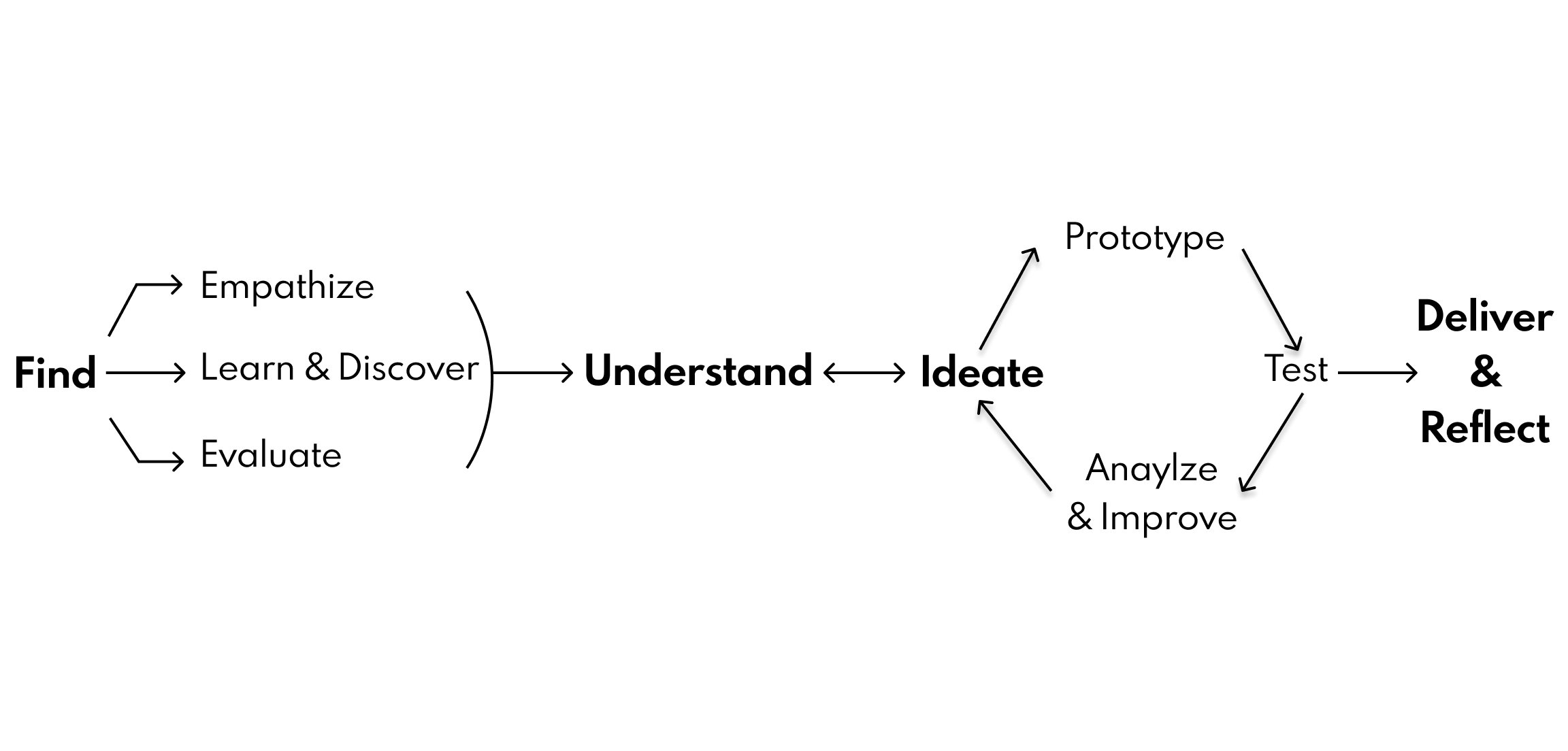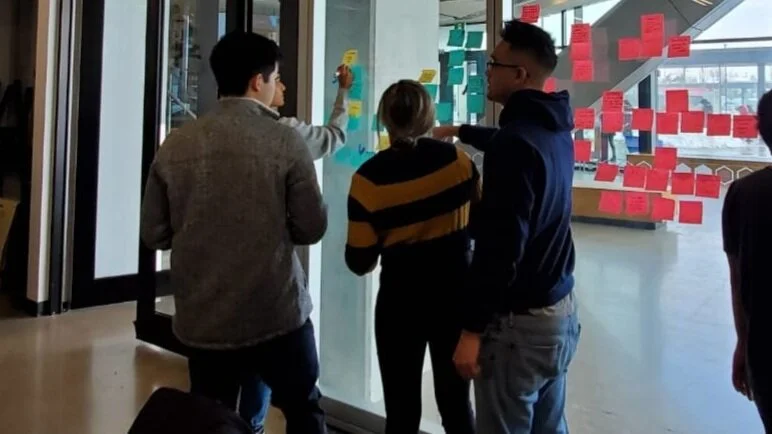Empathy, creativity, curiosity, and open communication are core elements in my design process. I prefer to keep my process flexible at a high level to adapt to new projects, teams, and environments.
Find
The first step is to find the problem I am working with. When dealing with complex situations, it is important to keep an open mind and empathize with what our users are struggling with and what they are enjoying interacting with. Through user interviews, secondary research, and other methods such as ethnographic inquiry with my users, I seek to learn and discover answers to these questions:
What is the product or service?
Is it a new product or has it been on out on market for some time?
What is this industry like? Who are the stakeholders?
Who is the user?
What are their obstacles, needs, and desires?
What are the goals and objectives of the project?
Understand
After finding the problem and evaluating user goals and needs, I make sure I understand the scope of the problem. A preferred method at this stage is to create a user persona, to pinpoint our users’ personality, goals, and needs, pain points, wants, and current behaviors.
Ideate
Working with our client, HyrdoOne
Every problem can have multiple solutions. To find the most appropriate solution I use a variety of tools, research methods and brainstorming exercises. Storyboards and user journey maps are key tools at this step and serve as a useful reminder of the user’s obstacles, needs and desires. Some other methods I use to ideate include big idea vignettes and How Might We statements.
There is an iterative approach between understanding and ideating, as I always ask if the proposed solution(s) solves the problem. Methods I use are creating quick sketches, wireframes, having constant discussions with my team and using personal judgment.
Prototyping
The prototyping stage includes deliverables such as user flows, wireframes, high-fidelity prototypes and mock-ups. Between iterations, I make sure to test its functionality and seek feedback on the design.
Test
I make sure to test the proposed design solution to spot usability issues, eliminate creator bias and reveal areas of improvement. This is done through multiple usability tests and demos with users. At this stage, I also check the accessibility of the design to ensure that the product or service is accessible to all users and customers, looking for issues such as low color contrast.
Analyze & Improve
At this stage, I gather and analyze the insights from the tests to determine what needs to be removed, improved or added. While analyzing the insights, I look specifically for usability and accessibility issues to determine what is most urgent for that iteration of the design.
Deliver & Reflect
Once I arrive at a solution that answers the core problem, it is time for delivery. I make sure to save design components for easy access and communication between developers. Further, I reflect and conduct a deep retrospective on the project. I ask myself questions such as:
What did I learn?
What could I have improved on? What did I do well?
Were there steps during the process that was particularly effective? Ineffective?



